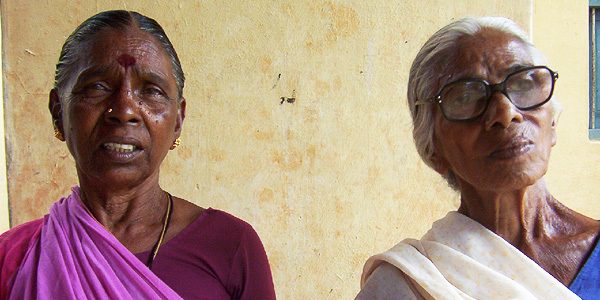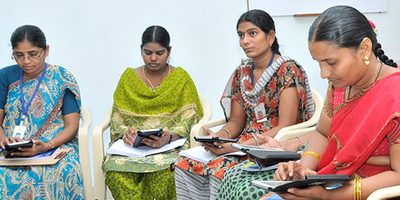
Keep it local – innovation changing world health
In the rural areas of Andhra Pradesh on the southeastern coastline of India, a group of women may hold the key to changing the way healthcare services are delivered, to reducing the cost of healthcare and preventing death and disease.
Using mobile phone technology, 11 Accredited Social Health Activists (ASHAs), who are non-physician community health workers, and three doctors are involved in a pilot that is screening and managing cardiovascular disease with the assistance of tablet devices.
They are working with a field team from The George Institute for Global Health who will take the findings from this pilot, and refine the system, in preparation for a full research trial using the tablet-based technology across 54 villages, 18 primary healthcare centres and involving around 14,000 people.
Cardiovascular disease is the leading cause of premature death and disability in India with more than 30 million people suffering a heart attack each year and many millions more dying as a consequence of what is a highly preventable disease.
Using technology to make healthcare more accessible and affordable is a focus for The George Institute and the results from this project have global implications for the delivery of health services especially in low-income settings.
The ASHAs are using an application called SMART Health India. The SMART Health app built into tablet devices will help both doctors and ASHAs to better identify cardiovascular risks such as raised blood pressure, high cholesterol and diabetes as red flags for the potential of suffering a heart attack. As part of the project, ASHAs, are trained to carry out procedures like blood pressure and blood sugar measurement, and used the tablet to predict a patient's 10-year risk of cardiovascular disease.
High-risk individuals identified by the ASHA are then referred to a doctor for a management plan for long term care. Although ASHAs have experience in maternal and child health, conducting household heart health checks is completely new.
Associate Professor David Peiris, of The George Institute for Global Health, Australia, was one of the field team who worked on the training of the ASHAs in India.
"The ASHAs were enthusiastic about the training and working on the project – they used the tablet and navigated through the app with ease," he said.
"There was no fear about swiping and pressing buttons. When we arrived at the meeting room for training several ASHAs had come early and were already using the app."
George Institute Senior Research Fellow D Praveen was also a part of the field team and recalls the reactions of patients to the new technology and to the greater role of the ASHAs in providing the screening.
"The first patient to be screened by the ASHA was around 55 years old and he had never had a blood pressure check in his entire life," he said.
"Apprehension was clearly visible on his face but the re-assuring thing for him was that he knew the ASHA and the care and support she already provided to his fellow villagers. He noticeably relaxed after constant encouragement from ASHA and at the end of the consultation, he said he was happy to know about his low-risk status. During one screening check a small queue of neighbors started forming outside the house to have their check-up also done by the ASHA.
"For a few people whom the ASHA identified to be at high risk of heart disease, they understood the take home message and were comfortable with visiting the doctor for treatment."
Associate Professor Peiris said that predicting the risk of these preventable diseases meant that a healthcare practitioner could work with the patient to change their habits or behaviors.
"It may be about stopping cigarettes, changing diet and reducing salt; being more active or starting medicines," he said.
"ehealth and mhealth, using innovative technology and mobiles, can give practitioners and also patients more tools to manage their health on the basis of reliable, readily accessible, easy to use information, and at the same time significantly improve access to medical care.
"This is important in India where there are 500,000 doctors, but a need for three million to provide essential healthcare. When on the field trip we visited a primary healthcare centre. The doctor had seen 70 patients in the previous three hours. The clinic had run out of blood pressure medicines for that month and it was only mid-November. As a GP, I put myself in that doctor's shoes for a short while and had a brief insight into the enormous challenges of delivering good primary health care in this setting. It inspires me in my work at The George Institute to use smart technology to deliver innovation at a low cost so that people can receive essential healthcare.
"We are rapidly approaching the point where there will be as many mobile subscriptions as there are people on the planet.
"This connectivity offers vast untapped potential to provide better health care for the five billion people who currently have limited or no access to essential healthcare. Despite this bold promise we need rigorous evidence to demonstrate that this can be translated into reality."
The field team will provide ongoing support to these ASHAs in their home villages and to the doctors in three primary health care centres as part of the field-testing over the next few months and into the early part of next year before the more extensive trial later in 2013.




